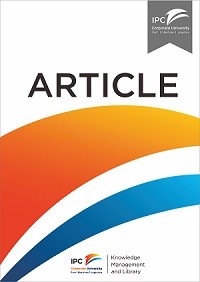Article
Competitiveness of container terminal operating companies in South Korea and the industry–university–government network
Burgeoning container port facilities have fostered intensified competition among container terminal operating companies (CTOCs). However, despite research into their survival strategies which identified antecedents of competitiveness including hard factors such as facilities, available cargo and cargo processing ability, softer factors spanning human resource management, networks and strategic alliances with universities and government agencies in industry–university–government (I–U–G) networks have been overlooked. This study aims to examine both hard and softer antecedents of competitiveness as perceived by 152 professionals in South Korean CTOCs; empirical relationships among these antecedents, I–U–G networks, and competitiveness itself; and the significance of the I–U–G network in establishing and improving competitiveness. Posited antecedents of competitiveness included human resources, facilities, service quality, customer orientation, reputation, and government support policy as independent variables; the I–U–G network as a moderating variable; and competitiveness as a dependent variable. Empirical structural relationships revealed that excepting government support policy, each variable significantly affected CTOC competitiveness. Further, the I–U–G network moderated the relationships between the antecedents of competitiveness and competitiveness. Because an effective I–U–G network was pivotal in controlling CTOC competitiveness, improved competitiveness requires not only differentiation of human resources, facilities, service quality, customer orientation, and reputation factors but also I–U–G network developments.
Ketersediaan
Informasi Detail
- Judul Seri
-
Transportation Research Part A
- No. Panggil
-
ATC LO YOO c
- Penerbit
- Korean : Elsevier., 2015
- Deskripsi Fisik
-
15 p.
- Bahasa
-
English
- ISBN/ISSN
-
-
- Klasifikasi
-
LO
- Tipe Isi
-
-
- Tipe Media
-
-
- Tipe Pembawa
-
online resource
- Edisi
-
-
- Subjek
- Info Detail Spesifik
-
-
- Pernyataan Tanggungjawab
-
Junghyun Yoon
Versi lain/terkait
| Judul | Edisi | Bahasa |
|---|---|---|
| Free trade agreements and maritime supply chain costs : competitiveness of Korean firms | en | |
| Identifying antecedents of information exchange within supply chains | Vol. 32 Issue: 9, pp.755-770 | en |
| An ERP approach for container terminal operating systems | VOL. 30, NO. 3, 197–210 | en |
Lampiran Berkas
Komentar
Anda harus masuk sebelum memberikan komentar

 Karya Umum
Karya Umum  Filsafat
Filsafat  Agama
Agama  Ilmu-ilmu Sosial
Ilmu-ilmu Sosial  Bahasa
Bahasa  Ilmu-ilmu Murni
Ilmu-ilmu Murni  Ilmu-ilmu Terapan
Ilmu-ilmu Terapan  Kesenian, Hiburan, dan Olahraga
Kesenian, Hiburan, dan Olahraga  Kesusastraan
Kesusastraan  Geografi dan Sejarah
Geografi dan Sejarah